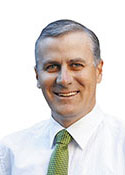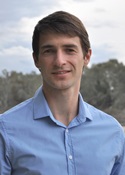Riverina
Margin: Nationals 19.2%
Region: Rural Southern, New South Wales
In a nutshell: Riverina has become a safe seat for the Nationals since the days of Al Grassby’s tenure in the early 1970s, and has now lost its historic anchoring point of Griffith with the latest redistribution.
Candidates in ballot paper order

|
MICHAEL McCORMACK RICHARD FOLEY PHILIP LANGFIELD TIM KURYLOWICZ GLENN O’ROURKE KEVIN POYNTER |
The Riverina electorate has covered a shifting area of interior New South Wales since it was created at federation, the only interruption being a name change to Riverina-Darling between 1984 and 1993. The recently published draft redistribution proposes a historic change that would deprive the electorate of the one constant of its long existence, the town of Griffith and the surrounding Murrumbidgee Irrigation Area. The general effect is to reorient the electorate north-eastwards, adding 17,000 voters around Forbes and Parkes from Calare in the north-east, and 29,000 around Young and Cootamundra from Hume further to the south. This compensates it for the loss of 30,000 voters in and around Griffith to Parkes, and over 10,000 in the Snowy Mountains shires of Tumut and Tumbarumba, who are transferred to Eden-Monaro. Further to the south, the 2000 of the Shire of Lockhart are transferred from Farrer to Riverina. Notable changes to the electorate in the past included its absorption of Broken Hill and the South Australian border territory when the Darling electorate was abolished in 1977, and the exchange of these areas for Wagga Wagga when the name reverted to Riverina in 1993.
Although a safe seat for the Nationals in recent decades, Riverina was fairly marginal for most of its history, and was most recently won by Labor in 1977. It had earlier been held for Labor from 1969 to 1974 by Al Grassby, a former state member for Murrumbidgee who had strong support from the Italian community that dominated Griffith and its surrounds. Grassby achieved an improbable victory in 1969 on the back of an 18.8% swing and went on to serve as Immigration Minister in the first term of the Whitlam government, winning national fame for his colourful sartorial style. He was defeated at the 1974 election by Country Party candidate John Sullivan, following what Labor speech-writer and Whitlam biographer Graham Freudenberg reckoned to be a “virulent racist campaign”. The Liberal candidate at that election was Donald Mackay, who disappeared in 1977 after treading on the toes of local drug trade interests. Grassby was acquitted in a criminal defamation case in 1992 after a commission of inquiry found he had sought to protect Mackay’s real murderers by asking a state MP to suggest his wife and son knew something about his fate.
Labor’s recovery of the seat in 1977 was achieved by a margin of 51 votes, and assisted by the electorate’s gain of Broken Hill. The gentlest of shifts at the 1980 election delivered the seat to Noel Hicks of the Nationals, who survived the Hawke government’s election in 1983 and held on to tight margins in Riverina-Darling for the nine years of its existence. The 1993 redistribution did the Nationals a good turn by moving Broken Hill to unloseable Parkes, leaving both Parkes and Riverina as safe seats. The seat was held for the Nationals by Kay Hull from 1998 until her retirement in 2010, when she was succeeded by Michael McCormack, a former editor of the Daily Advertiser newspaper. A Liberal candidate at the 2010 election made little impression, finishing third behind Labor. McCormack attained parliamentary secretary status after the 2013 election victory, becoming Assistant Minister to the Deputy Prime Minister when Malcolm Turnbull became Prime Minister in September 2013, at which time the title of parliamentary secretary was abolished.
Analysis by William Bowe. Read William’s blog, The Poll Bludger.


